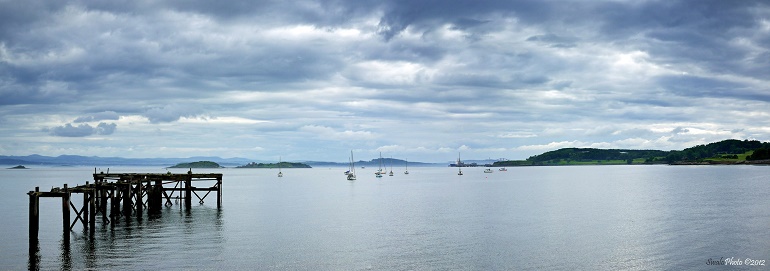�
Our Common Future Under Climate Change
International Scientific Conference 7-10 JULY 2015 Paris, France

SwaloPhoto
Ecosystem change: how much do we know?
201507-17
By Fay Newbery, University of Reading
�Can ecosystems adapt to climate change in the absence of a (human) helping hand?�
This was a question posed by Katherine Richardson in a presentation at the Our Common Future Under Climate Change conference.
Changes in climate are high on the agenda for many people but biosphere integrity is just as fundamental in preserving the planet Earth as we know it.
When we want to study ecosystem change it is useful to look at ocean systems first. Impacts of change are less complex in the oceans than on land. In the oceans organisms have ready access to water, have fewer barriers to migration than on land and encounter smother, less sudden, changes in environment both in time and space.
The North Sea is one of the most well studied ocean areas. In particular fish stocks have been well recorded. The sea water temperature in this ocean area has risen 1.6 degrees centigrade over the last 25 years as a result of climate change and the diversity of fish species has actually increased! Research shows that these two facts are linked. There is clear evidence that new species are coming into the North Sea from warmer waters at lower latitudes forming new fish communities and changing the ecosystem.
A similar pattern of increased fish diversity has been seen in the Caribbean but in that area the number of fish species is already beginning to fall and there are now signs that fish species diversity is reaching a plateau in the North Sea.
North Sea fish numbers are not remaining static either. Population numbers of the original fish species and of some of the top predators are falling while the populations of fish from more southern areas are increasing.
Fish also appear to move vertically in the oceans as a response to warming waters, paralleling the movement of species to higher altitudes as temperatures rise on land.
Phytoplankton are another group whose response to changing sea temperatures has been studied. Although no significant change in phytoplankton biodiversity has been found, the structure of plankton communities are changing. Species are moving further north and the proportion of small phytoplankton is increasing as temperature rises.
Some phytoplankton species are important for carbon sequestration. They have the ability to form a protective layer of calcium carbonate within their cells. As the plankton dies, the calcium carbonate sinks to the ocean floor where it remains. This process needs to occur in deep water and may become disrupted if organisms move to shallower locations in the ocean in response to climate change.
�What messages can we take from the oceans?� Richardson asked.
-- Organisms move both vertically and horizontally in response to warmer temperatures
-- This creates new ecosystems through reorganising organisms into new groups.
Ecosystem responses are likely to be even more complicated on land � and more vulnerable due to problems with water supply and the presence of barriers to migration.
So the original question posed may be the wrong one. Ecosystems are going to change: they will contain different combinations of species to any that have been seen before. Perhaps the question we need to ask is: Will new ecosystems prove to be capable of maintaining an ongoing biosphere that preserves the Earth we know?
Fay Newbery is a PhD student at the University of Reading studying climate effects on crop disease. She is part of the volunteer social media team at the Our Common Future Under Climate Change conference.
This is part of a blog series written by volunteer social reporters profiling climate scientists, economists, social scientists and civil society members who are presenting and discussing innovative climate science at Our Common Future. For more follow and #CFCC15 on Twitter



